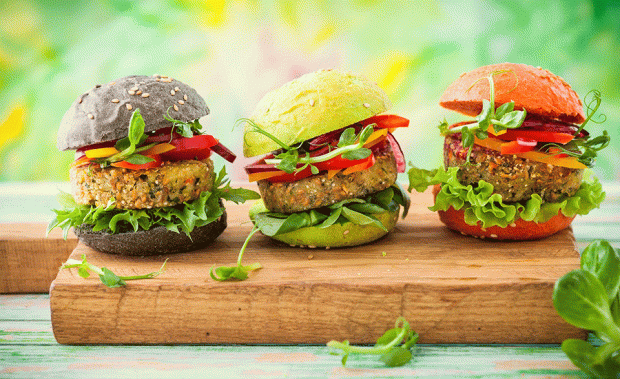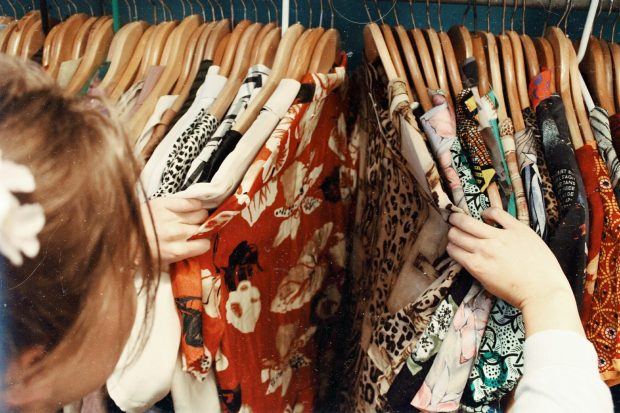With so much focus on sustainable living these days and how every person can make a difference in protecting the environment, it’s easy to feel overwhelmed. If you’re new to sustainable living, you may be wondering where to start, how you can make a difference, or are maybe even doubting the significance of any changes you can make. This guide is here to help with some key steps you can take for a more sustainable lifestyle. You don’t have to do everything at once, and any change you make, no matter how small, will always make a difference.
Think Differently About How You Use Energy in Your Household
Your daily habits dictate your sustainable living when it comes to your home and here you can make a significant impact on the environment.
Some of the biggest changes regarding sustainable living can be made at home without compromising on anything you would usually do. These are small changes that can add up and make a difference overall.
Install Energy-Efficient Bulbs
Not only do energy-efficient bulbs help reduce the impact on the environment, but they can also help to reduce your electricity bills too, helping you to save money as well as the environment. Replacing your normal lightbulbs with energy-efficient ones can seem like a large initial expense, but the monetary return will speak for itself over time. Or you can replace gradually when your bulbs next need replacing. This applies to lamps as well as overhead lights.
Install Energy-Saving Electrics
If you’re looking to replace or change the electrics in your home, especially in the kitchen, then looking for energy-saving options will be a great benefit to sustainable living. When it comes to items like your kettle and coffee machine, energy-saving appliances will always be a big help in the same way energy-efficient bulbs are.
 Sustainable Living Means Not Putting On Heating if You Don’t Need To
Sustainable Living Means Not Putting On Heating if You Don’t Need To
Living more sustainably doesn’t mean that you have to feel guilty for putting your heating on or spending time being too cold at home in order to reduce your impact. All it takes is a different way of thinking about how you use your heating and the setup of your home.
Think about:
- Make sure all draughts are identified and sealed so that heat doesn’t escape
- Closing doors to ensure rooms can warm up quicker
- Use draught excluders for any gaps around doors and windows if they can’t be manually sealed
- Positioning main seating like sofas close to heaters, or close to walls so that your back isn’t exposed to draughts
- Use blankets, hot water bottles, and thicker clothing to keep yourself warm without relying too much on the heating
Switch off Plugs When Not in Use
Many people are guilty of leaving electronics on standby or plugs switched on, especially when dealing with TVs, games consoles, and kitchen appliances when the plug is behind the unit. Making a conscious effort to turn off electronics completely when not in use — such as overnight or when you’re away at work — can help to minimize power usage and environmental impact without changing the way in which you use electronics.
Another idea is to make sure you change your phone or devices during the day or while you’re awake. Many people charge their phones overnight, but this can lead to the plug being switched on far longer than it needs.
Switch Up Your Diet
Another consideration to make when thinking about sustainable living is the food you consume and the way in which you consume it. When wanting to make positive changes, your diet and relationship with food should be taken into account.
Try Going Vegetarian or Vegan
It’s a common topic of discussion that eradicating your meat intake can drastically help the environment, and a lot of people have made the switch to vegetarianism or veganism in a bid to adopt a more plant-based lifestyle. If this is something you’re willing to do, then this can be a plus for your environmental impact.
If you’re not sure how you would find a vegetarian or vegan diet, the key is not to pressurize yourself or expect it to happen easily overnight. You could make a gradual change or do a trial run of being a vegetarian or vegan for a month and see how you respond to it.
Or Reduce Your Weekly Meat Intake
If becoming a vegetarian or vegan isn’t for you, then any reduction you can make with your meat intake will still make a positive difference. If you usually eat meat every day of the week, can you have one meat-free day to explore vegetarian recipes? Or perhaps a few days a week bookmarked to be meat-free? Even one day is better than nothing.
Be More Creative with Recipes and Do Your Research
If you’re thinking about your meat intake and the plant-based options out there, exploring new recipes and finding the right information is paramount for sustainable living eating habits. Those who don’t know much about plant-based food or perhaps stick to the same old recipes (especially if you don’t enjoy cooking) may not be aware of all the great options out there for a variety of recipes. The more you know and the more creative you can get, the better you might feel about dropping meat from the menu.
Source Your Food Locally
Reduce your carbon footprint and support local businesses by seeking produce in your local area.
You can browse fruit and vegetable stalls or go to a local butcher instead of buying food in bulk from supermarkets or ordering it to be delivered.
 Use Water Filters
Use Water Filters
Plastic is one of the biggest materials to negatively impact the environment, so if you’re a fan of drinking bottles of water regularly, making a switch to a water filter can help you to reduce your plastic impact. A water filter means you can switch to tap water and eradicate the need to buy any plastic water bottles.
Understand Portions
Food waste also has a negative impact on the environment, so when trying to live a more sustainable lifestyle, you should always try to limit your food waste. One way of doing this is to better understand your portions for every meal. Many people are guilty of making far too much food, especially when it comes to pasta and rice, and therefore throwing out what they don’t eat after making too much.
Make a Weekly Meal Plan
A weekly meal plan will also help you to better reduce your food waste. By understanding exactly what you’re cooking, which ingredients you need, and when to eat them by, you’re ensuring that you don’t have cupboards or a fridge full of food you’ve impulsively bought that might not get used or go off before you get round to eating it. Meal plans mean you can buy exactly what you need and ensure it isn’t wasted.
Change Up Your Beauty and Hygiene Routine
Everyone deserves to indulge in a rewarding beauty routine, feel clean and pampered, and take part in self-care. Nevertheless, beauty and hygiene products, as well as the way you interact with them, can result in negative environmental impacts.

Photo by Toa Heftiba on Unsplash
Be More Responsible with the Amount of Water You Use
There’s nothing like a relaxing bath after a stressful day or a long shower. However, you should think more carefully about how you use water if you’re looking to engage with sustainable living.
Is there any way you can reduce the length of time you take in the shower? Can you limit the water in your bath so that you can still enjoy a long soak but half the amount of water you use? Is there any way to better organize your day to limit your showers, such as working out before your morning shower rather than later?
When it comes to water, also think about how much you’re filling your kettle and turning taps off whilst brushing your teeth.
Look for More Natural Beauty, Hygiene and Makeup Products
Being more sustainable also relates to the beauty, hygiene, and makeup products you buy. You should take the time to find sustainable brands that push clean beauty products you can enjoy without impacting the environment. Plant-based beauty products that take advantage of natural ingredients help the environment as well as your skin.
Hygiene products like shampoo bars are great for eradicating the need for plastic bottles. You can also look for beauty products that limit the use of pointless packaging in order to reduce waste.
Think About How You Remove Your Makeup, Too
When it comes to beauty products and a makeup routine, it’s also about how you do take off your products, too. If you’re spending a long time washing your face, be sure to fill the sink or turn the tap off to avoid excess water waste. Using makeup wipes means contributing to products that can negatively impact the environment, as wipes take a long time to break down, so you can therefore think about an alternative such as a removal balm coupled with a face cloth you can regularly wash.
Try to Ditch as Many Plastic Containers as Possible
Look for alternatives when it comes to the beauty items you buy, such as glass jars or containers that can be re-used instead of plastic, or beauty bars that come in cardboard packaging rather than liquid and plastic alternatives. Some beauty brands will make it their mission to avoid using plastic altogether, so doing research into this is also beneficial.
Avoid Disposable Beauty Items if You Can
This sustainable living idea is so easy to implement. If you regularly use a certain item, think about investing more in a reusable one to minimize waste. Instead of using disposable razors, for example, invest in a more long-term one that you can simply replace the blades with. Maintain a good hygiene routine with your makeup brushes and sponges so that you can re-use them instead of needing to throw them away and replace them on a regular basis.
Be More Conscious About Fashion
Browse Thrift and Second-Hand Stores
There are many great and unique items to find in thrift stores and items which are preloved and ready for a new home. Taking the time to give second-hand stores a chance means that you can reduce waste and also avoid turning to fast fashion for your new clothing items.
-

Photo by Becca McHaffie on Unsplash
Donate Unwanted Clothing Items
Instead of throwing away unwanted clothing, donate it to charity instead. This can reduce waste and help clothing find a new home so that others can enjoy it, without your fashion choices impacting the environment.
Repair or Adjust What You Can
It’s easy to throw away an item that has a hole in it, which doesn’t fit quite the way you like, or an item you believe is ruined through stains or other issues. Don’t be so quick to throw away and add to the waste pile. However, there may be ways you can fix it at home, to save yourself money on buying new clothes, as well as limit waste impact.
You may be able to take clothes that don’t fit right to a tailor to have them adjusted. Holes in clothes can easily be darned up so you can continue to wear them, or you can try at home natural dye solutions to change the color or style of certain items. Maybe you can even invest in a sewing machine and find a new hobby out of clothing adjustments at home.
To Conclude: Make a Switch To Sustainable Living Today
As you can see, there are many ways to make a positive environmental difference in many areas of your life, whether it’s daily habits, cooking, fashion, or beauty.
If you adopt even one of these practices from today, you’ll still be making a more positive difference to the world around you. Those who know that they are making positive differences with their lifestyle decisions may also feel more positive mentally through knowing how their efforts are helping the world for the better.
Main Photo by Pop & Zebra on Unsplash




 Use Water Filters
Use Water Filters
![women [longevity live]](https://longevitylive.com/wp-content/uploads/2020/01/photo-of-women-walking-down-the-street-1116984-100x100.jpg)










